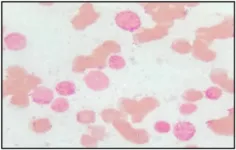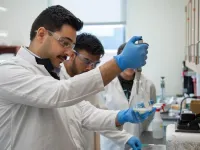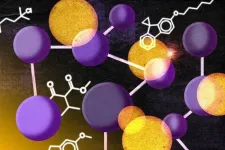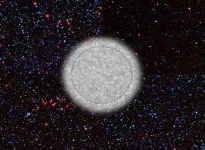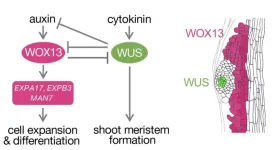(Press-News.org) Cancer cells-to-be accumulate a series of specific genetic changes in a predictable and sequential way years before they are identifiable as pre-malignancies, researchers at Stanford Medicine have found. Many of these changes affect pathways that control cell division, structure and internal messaging — leaving the cells poised to go bad long before any visible signs or symptoms occur.
The study is the first to exhaustively observe the natural evolution of the earliest stages of human cancers, starting with cells that have a single cancer-priming mutation and culminating with a panel of descendants harboring a galaxy of genetic abnormalities.
Identifying the first steps associated with future cancer development could not only facilitate earlier-than-ever diagnosis — when a deadly outcome is but a twinkle in a rogue cell’s eye — but may also highlight novel interventions that could stop the disease in its tracks, the researchers say.
“Ideally, we would find ways to intercept this progression before the cells become truly cancerous,” said Christina Curtis, PhD, professor of medicine, of genetics and of biomedical data science. “Can we identify a minimal constellation of genetic alterations that imply the cell will progress? And, if so, can we intervene? The striking reproducibility in the genetic changes we observed from multiple donors suggests it’s possible.”
Curtis is the senior author of the research, which was published on May 31 in Nature. The lead authors of the study are former postdoctoral scholar Kasper Karlsson, PhD, and visiting graduate student Moritz Przybilla.
Cells of nefarious beginnings
The research builds on previous work in Curtis’s laboratory indicating that some colon cancer cells are seemingly born to be bad — they acquire the ability to metastasize long before the disease is detectable.
“Our studies of established tumors showed us that early genomic alterations seem to dictate what happens later, and that many of these changes seem to happen before tumor formation,” Curtis said. “We wanted to know what happens at the very earliest stages. How does a cancer cell evolve, and is this evolutionary path repeatable? If we start with a given set of conditions, will we get the same result in every case?”
The researchers studied tiny, three-dimensional clumps of human stomach cells called gastric organoids. The cells were obtained from patients undergoing gastric bypass surgery to treat obesity. At the beginning of the study, the researchers nudged the cells toward cancers by disabling the production of a key cancer-associated protein called p53 that regulates when and how often a cell divides. Mutations in p53 are known to be an early event in many human cancers, and they trigger the accumulation of additional genetic changes including mutations and copy number alterations — in which repetitive regions of the genome are lost or gained during cell division.
Then they waited.
Every two weeks, for two years, Karlsson cataloged the genetic changes occurring in the dividing cells. When Karlsson and Przybilla analyzed the data they found that, although changes occurred randomly, those that conferred greater fitness gave their host cells an evolutionary advantage over other cells in the organoid. As the cells continued to divide and the cycle of mutation and competition repeated over many iterations, the researchers saw some common themes.
Predictable pathways
“There are reproducible patterns,” Curtis said. “Certain regions of the genome are consistently lost very early after the initial inactivation of p53. This was repeatedly seen in cells from independent experiments with the same donor and across donors. This indicates that these changes are cell-intrinsic, that they are hardwired into tumor evolution. At the same time, these cells and organoids appear mostly normal under the microscope. They have not yet progressed to a cancer.”
The researchers found that these early changes usually occur in biological pathways that control when and how often a cell divides, that interfere with a cell’s intricate internal signaling network coordinating the thousands of steps necessary to keep it running smoothly, or that control cell structure and polarity — its ability to know what is “up” and “down” and to situate itself with respect to neighboring cells to form a functioning tissue.
The researchers saw similar patterns occur again and again in cells from different donors. Like water flowing downhill into dry creek beds, the cells traced tried-and-true paths, gaining momentum with each new genetic change. Several of these changes mirror mutations previously observed in stomach cancer and in Barrett’s esophagus, a pre-cancerous condition arising from cells that line the colon and stomach.
“These changes occur in a stereotyped manner that suggest constraints in the system,” Curtis said. “There’s a degree of predictability at the genomic level and even more so at the transcriptomic level — in the biological pathways that are affected — that gives insights into how these cancers arise.”
Curtis and her colleagues plan to repeat the study in different cell types and initiating events other than p53 mutation.
“We’re trying to understand exactly what malignant transformation is,” Curtis said. “What does it mean to catch these cells in the act, about to topple over the edge? We’d like to repeat this study with other tissue types and initiating mutations so we can understand the early genetic events that occur in different organs. And we’d like to study the interplay between the host and the environment. Do inflammatory factors play a role in promoting progression? We know that it matters that the cells in these organoids are communicating with each other, and that is important to understanding progression and treatment response.”
Researchers from Karolinska Institutet, the University College London and the Chan Zuckerberg Biohub also contributed to the study.
The research was supported by the National Institutes of Health (grants DP1-CA238296 and U01-CA217851) and the Swedish Research Council.
END
Cancer’s origin story features predictable plot line, Stanford Medicine researchers find
Predictable mutations chart cancer’s path
2023-07-07
ELSE PRESS RELEASES FROM THIS DATE:
A novel chromosomal abnormality in AML patient: Case report and literature review
2023-07-07
“Here we report an unusual association of t (5; 17) with t (8; 21) in AML and we try to discuss the prognosis of this association and then the treatment.”
BUFFALO, NY- July 7, 2023 – A new research paper was published in Genes & Cancer on June 28, 2023, entitled, “A novel t (5; 17) (q35; q21) associated with t (8; 21) (q22; q22) in a patient with acute myeloid leukemia: case report and review of literature.”
The t (8; 21) (q22; q22) with the resulting RUNX1- RUNX1T1 rearrangement is one of the most common cytogenetic abnormalities in acute myeloid leukemia (AML). It is associated with a favorable prognosis. The t (5; 17) (q35; q21) is an ...
Art that integrates data visualizations can help bridge the US political divide over climate change
2023-07-07
MADISON – Communicating science to a general audience can be challenging. Successfully conveying research on polarizing topics such as climate change can be even more difficult.
But a new study from University of Wisconsin–Madison researcher Nan Li shows that intentionally integrating art with data visualizations can help non-expert audiences more meaningfully engage with climate change while also bridging political divides in ways that data alone cannot. In fact, data graphs on their own can exacerbate political division on climate change.
As an assistant professor in the Department of Life Sciences Communication, Li studies how innovative visual representations of science ...
Expanding Medicaid improved care without crowding out other patients
2023-07-07
People with low incomes who live in states that expanded Medicaid got more of the kind of health care that can keep them healthier in the long run, compared with similar people in non-expansion states, a new study finds.
They also received more health care overall, specifically clinic visits. But they didn’t crowd out patients covered by Medicare or private insurance such as from an employer, the study finds. Those groups continued to have clinic visits and receive preventive care at the same rate ...
nTIDE June 2023 Jobs Report: Employment hovers around all-time highs for people with disabilities
2023-07-07
East Hanover, NJ – July 7, 2023 – June’s job numbers remained around all-time highs for people with disabilities, according to today’s National Trends in Disability Employment – semi-monthly update (nTIDE), issued by Kessler Foundation and the University of New Hampshire’s Institute on Disability (UNH-IOD). nTIDE experts cautioned that employment of people with disabilities may be negatively affected by further anti-inflationary efforts by the Federal Reserve.
Month-to-Month nTIDE Numbers (comparing May 2023 to June 2023)
Based on data from the U.S. Bureau of Labor Statistics (BLS) ...
Soft tissue restoration, blood vessel formation focus of $3M grant
2023-07-07
UNIVERSITY PARK, Pa. — The ability to regenerate and pattern blood vessels, the literal lifelines extending deep into soft tissues, remains an elusive milestone in regenerative medicine. Known as tissue revascularization, stimulating blood vessel growth and pattern formation in damaged or diseased tissues could accelerate the field of regenerative medicine, according to Penn State researchers.
With a four-year, $3 million grant awarded by the National Institutes of Health’s National Heart, Lung, and Blood Institute, Penn State chemical engineering and reconstructive surgery researchers plan to develop a new way to help restore soft tissue loss in patients ...
Learning the language of molecules to predict their properties
2023-07-07
Discovering new materials and drugs typically involves a manual, trial-and-error process that can take decades and cost millions of dollars. To streamline this process, scientists often use machine learning to predict molecular properties and narrow down the molecules they need to synthesize and test in the lab.
Researchers from MIT and the MIT-Watson AI Lab have developed a new, unified framework that can simultaneously predict molecular properties and generate new molecules much more efficiently ...
Previously unidentified proteins suggest new way to diagnose ovarian cancer
2023-07-07
A study led by Nagoya University in Japan has identified three previously unknown membrane proteins in ovarian cancer. Using a unique technology consisting of nanowires with a polyketone coating, the group succeeded in capturing the proteins, demonstrating a new detection method for identification of ovarian cancer.
The discovery of new biomarkers is important for detecting ovarian cancer, as the disease is difficult to detect in its early stages where it can most easily be treated. One ...
Uncovering secrets of plant regeneration
2023-07-07
Ikoma, Japan – Plants have the unique ability to regenerate entirely from a somatic cell, i.e., an ordinary cell that does not typically participate in reproduction. This process involves the de novo (or new) formation of a shoot apical meristem (SAM) that gives rise to lateral organs, which are key for the plant’s reconstruction. At the cellular level, SAM formation is tightly regulated by either positive or negative regulators (genes/protein molecules) that may induce or restrict shoot regeneration, respectively. But which molecules are involved? Are there other regulatory layers that are yet to be uncovered?
To seek answers to the above questions, a research group led by Nara ...
CT with CTA versus MRI in patients with dizziness
2023-07-07
Leesburg, VA, July 7, 2023—According to an accepted manuscript published in the American Journal of Roentgenology (AJR), patients discharged from the emergency department (ED) after CT with CTA alone could have benefitted from an alternative or additional MRI evaluation, including using a specialized abbreviated protocol for the modality.
Compared with those patients discharged after CT with CTA only, “the use of MRI in select patients presenting to the ED with dizziness was associated with greater frequency of critical neuroimaging results, greater use of echocardiography, ...
Researchers uncover how a genetic mutation can cause individuals with normal cholesterol levels to develop coronary artery disease at a young age
2023-07-07
A novel molecular pathway to explain how a mutation in the gene ACTA2 can cause individuals in their 30s – with normal cholesterol levels and no other risk factors — to develop coronary artery disease has been identified, according to researchers with UTHealth Houston.
The study was published in the European Heart Journal.
“The gene ACTA2 codes a specific protein that has nothing to do with cholesterol,” said Dianna Milewicz, MD, PhD, senior author of the study and professor and director of the Division of Medical Genetics at McGovern Medical School at UTHealth ...
LAST 30 PRESS RELEASES:
Study reveals that the body uses different sensors to detect cold in the skin and in internal organs
iPS cells from dish to freezer and back
Deep neural networks enable accurate pricing of American options under stochastic volatility
Collective risk resonance in Chinese stock sectors uncovered through higher-order network analysis
Does CPU impact systemic risk contributions of Chinese sectors? Evidence from mixed frequency methods with asymmetric tail long memory
General intelligence framework to predict virus adaptation based on a genome language model
Antibiotic resistance is ancient, ecological, and deeply connected to human activity, new review shows
Vapes, pouches, heated tobacco, shisha, cigarettes: nicotine in all forms is toxic to the heart and blood vessels
From powder to planet: University of Modena engineers forge a low-carbon future for advanced metal manufacturing
Super strain-resistant superconductors
Pre-school health programme does not improve children’s diet or physical activity, prompting call for policy changes, study finds
Autumn clock change linked to reduction in certain health conditions
AI images of doctors can exaggerate and reinforce existing stereotypes
Where medicine meets melody – how lullabies help babies and parents in intensive care
We may never be able to tell if AI becomes conscious, argues philosopher
AI video translation shows promise but humans still hold the edge
Deep ocean earthquakes drive Southern Ocean’s massive phytoplankton blooms, study finds
Without campus leftovers to pick through, the beaks of this bird changed shape during the pandemic
High-dose antibiotic does not reduce mortality in tuberculous meningitis
How many insects fly in the sky above the USA?
Could cheese protect your brain health?
Who faces more difficulty recovering from stroke?
Colliding galaxies create the brightest, fastest growing black holes at their center
New BrainHealth research reveals tradeoffs on sleep with cannabis use for chronic pain
Aging-US now on ResearchGate, enhancing visibility for authors and readers
'Molecular glue' stabilizes protein that inhibits development of non-small cell lung cancer
Mount Sinai Health System is recognized in 2025 Chime Digital Health Most Wired survey
From prey to predator: How carnivores spread beneficial fungi
Menopause symptoms may be frequent and have negative effects, according to female endurance athletes
US Congressmembers’ responses on X to mass shooting events differ along party lines
[Press-News.org] Cancer’s origin story features predictable plot line, Stanford Medicine researchers findPredictable mutations chart cancer’s path
